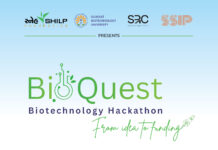Biology of the Future: AI-Designed Viruses That Hunt and Destroy Bacteria
The next step in the Biology of the future is AI-generated Life Forms
Renowned Scientists at Stanford University and the Arc Institute in Palo Alto, California, have taken a bold step into the Biology of the Future, using AI to design viruses with unprecedented precision.
Unlike traditional research, this study demonstrates that AI can not only analyze Biological systems but also actively write and engineer viral genomes, bridging the gap between computation and life itself. The Research hints at a future where AI-driven Bioengineering could transform Medicine, Synthetic Biology, and our understanding of living systems.
This mind-blowing research represents a convergence of Machine Intelligence and human ingenuity. The study suggests a future where AI could redefine our understanding of life itself, combat antibiotic-resistant infections, and accelerate the development of novel therapeutics.
An outstanding study from Stanford University and the Arc Institute in Palo Alto, California, has revealed that the viruses with AI-designed DNA can successfully infect and kill specific Bacteria.
These are not just theoretical Viral models; laboratory tests confirmed that the AI-generated viruses can actively attack Bacterial cells. This marks a significant milestone in AI-driven Bioengineering and Synthetic Biology.
The Research study, currently awaiting peer review, demonstrates the practical potential of large language models in designing functional Genomes.
A Computational Biologist and a senior Author at Stanford, Brian Hie, stated, “This is the first time AI systems are able to write coherent Genome-scale sequences,” in an interview with Nature. He further added that “The next step is AI-generated life.” He highlighted that AI can now design entire Viral Genomes, representing a significant step forward in the field of Bioengineering.
Furthermore, Samuel King, the co-author, stated that despite the success, “a lot of experimental advances need to occur in order to design an entire living organism,” thereby emphasizing the extensive complexity of creating fully autonomous living organisms.
Understanding Viruses: Nature’s Genomic Machines in the Biology of the Future
Viruses are not considered fully alive or entirely dead. They function just like Genomic machines, depending on host cells to replicate because they cannot reproduce independently or even generate energy.
Unlike cellular organisms, viruses follow a set of programmed instructions to multiply relentlessly. Their relatively simple Genomes make them ideal targets for both human and AI-driven Genetic experimentation.
A Genome represents the complete set of DNA (Deoxyribonucleic acid) in an organism, and viruses’ compact Genetic material allows for complete manipulation and design in ways that are not yet possible for more complex life forms.
AI-Powered Viral Design: Crafting the Biology of the Future
The Research team used an AI model called “Evo,” trained explicitly on millions of Bacteriophage Genomes through Bioengineering. Unlike general-purpose AI systems, Evo is optimized for designing Bacteriophages, which are viruses that specifically infect Bacteria.
The team began with a phage called “phiX174 (or ΦX174),” a well-characterized phage that infects the bacterium Escherichia coli (E. coli).
According to Nature, this phage, phiX174, is historically notable as the first DNA-based Genome to be sequenced, with only 5,400 base pairs and 11 genes, making it a well-understood and manageable template for AI-guided design.
Utilizing Evo, the Researchers created 302 distinct virus designs. They then chemically assembled these Genomes and tested them on live E. coli strains to assess the functionality.
Laboratory Success and Surprising Results
Out of the 302 AI-designed viruses, 16 successfully infected and killed their Bacterial hosts.
These viruses inserted their DNA into the Bacteria, hijacked the cellular machinery to replicate, and then ultimately lysed the cells. While only a fraction of the designs were effective, the result represents a remarkable achievement in Synthetic Virology.
The AI-designed viruses also proved capable of infecting three different E. coli strains and, in some cases, outperformed the natural phiX174 bacteriophage.
A former Bioengineer at Caltech and Imperial College London, Niko McCarty, wrote for Asimov Press: “In many cases, they were more infectious than wildtype phiX174 despite carrying major genome alterations that a human would be unlikely to rationally design.” He emphasized that AI-designed viruses can outperform natural viruses in terms of infectivity.
Ethical and Safety Considerations
Although this Scientific achievement is quite promising, it raises significant Ethical issues.
Experts warn that if viruses can be designed to function in the laboratory, then the same methodologies could be misused to accidentally produce an uncontrollable and lethal virus or even develop harmful pathogens.
A pioneer in Synthetic DNA Research and the founder of the J. Craig Venter Institute, Craig Venter, stated in an interview with MIT Technology Review that, “One area where I urge extreme caution is any viral enhancement research, especially when it’s random, so you don’t know what you are getting.” He further added, “If someone did this with smallpox or anthrax, I would have grave concerns.” Thereby highlighting the need for strict and regulated safety protocols as well as raising a caution.
Venter also noted that the AI utilization is not entirely that radical; rather, it’s “just a faster version of trial-and-error experiments,” underlining that while the technology accelerates Research, it does not replace careful scientific oversight.
Implications for Synthetic Biology: Redefining the Biology of the Future
To date, AI models have been primarily used to generate DNA sequences for proteins, but not entire Viral Genomes. This Research represents the first illustration where AI was able to produce functional Genomes that work in real-world laboratory conditions fully.
Some of these novel AI-designed Genomes are so distinct from any known bacteriophage Genomes that they would technically be classified as their own species, McCarty added.
Samuel King described the implications for therapeutics: “It was quite a surprising result that was really exciting for us because it shows that this method might potentially be very useful for therapeutics.” This suggests that AI-designed viruses could help develop targeted antibacterial therapies, especially against resistant strains.
AI-designed viruses could pave the way for novel anti-bacterial treatments, particularly against antibiotic-resistant strains.
This research demonstrates the growing capabilities of AI in Synthetic Biology, enabling the rapid design of functional Viral Genomes.
From Code to Creation: The Dawn of the Biology of the Future
This Scientific Technology holds enormous promise for Medical applications, including targeted Bacterial therapies.
As there’s a famous dialogue that goes, ‘With great power comes great responsibility,’ this highlights the urgent need for strong safety measures as well as Ethical and Regulatory frameworks to prevent misuse.
As AI continues to expand its role in the field of Bioengineering, studies like this highlight both the responsibilities as well as the possibilities that accompany these powerful and novel futuristic tools.
This Stanford and Arc Institute Research work stands as a landmark achievement. AI has designed life-like Genomes that not only exist on paper but actively function in the laboratory, opening a new chapter in the Synthetic Biology sector.


























